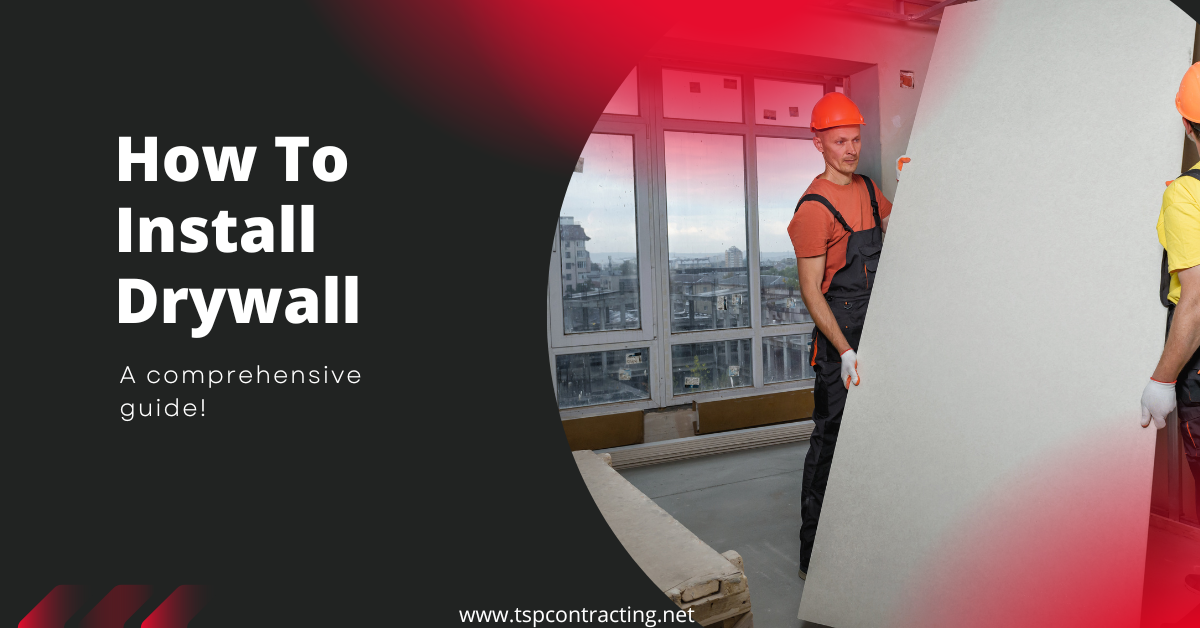
If you’ve never installed drywall, it can seem like a complicated task, especially if you’ve never even touched or held drywall in your life before. Fortunately, there are some simple tips to keep in mind during the process that will make it much easier and simpler to get the job done right the first time and make sure that it lasts as long as possible. If you don’t have enough time, skills, and tools, you should hire a reliable drywall installation contractor.
Here are seven of these tips to help you install drywall effectively and efficiently every time.
1. Prepare the area
The first step in the installation is to make sure the area is properly prepared. This includes removing all old or loose drywall, taping and texturing the surface, and priming the surface with a bonding agent before applying new drywall.
Drywall installation is messy and dusty work. To get the best results, you’ll need to prepare the area before installation. You can do this by taping off any trim or objects around the drywall that are in danger of getting splashed with mud or dust. If possible, it’s also helpful to cover furniture or move it to an adjacent room. For maximum efficiency, installers should work from top-to-bottom and left to right so they’re never overloading themselves with too much weight as they lift sheets of drywall.
Make sure you’re using the appropriate materials. If your project requires foam insulation on both sides of the drywall, then don’t forget to include this material as part of your purchase. Remember that plywood cannot be used as a substitute for furring strips
2. Get the right tools
It’s important to have the right tools on hand when you’re installing drywall. Make sure you have enough drywall screws, tape, and joint compound. If you don’t have all of these items, you can usually find them at your local hardware store. Be sure that you have both a claw hammer and an electric drill before starting your installation.
3. Hang the drywall
- First, measure the area and cut the drywall to size. Double-check your measurements before you start nailing them up because it is hard to fix mistakes without making more!
- Use a level when hanging drywall on walls and ceilings so your joints are straight and level with one another.
- If you are using screws instead of nails, drill pilot holes first to prevent cracking or splitting the boards as you screw them in place.
- When hanging drywall above doors or windows, be sure that there is at least 5/8 (1.6 cm) of space between the drywall and door/window trimming.
- When cutting pieces of drywall larger than 24×24 use a circular saw rather than trying to use the tool that comes with most kits – this will save time and frustration!
4. Finish the seams
- Measure and cut the drywall to size.
- Apply joint compound to the edges of the seams.
- Apply mesh tape across the seam line and cover with joint compound.
- Cover with mesh tape and apply joint compound across the entire seam line, making sure to completely cover it with a layer of joint compound or you will have an unsightly line on your drywall after painting it later.
- Allow the joint compound to cure before continuing.
- Use a finishing trowel for best results when applying joint compound (or plaster if using fiberglass panels).
- If possible, do not use metal taping knives as they will cause divots in your finished work that are difficult to repair
Related: How To Install Insulation In Open Walls
5. Tape the Joints
When taping the joints, it’s important to fill in any holes or gaps with insulation. Any air pockets will create an area where moisture can collect and lead to mold growth. If you are going over the plasterboard, you should cut the tape so that about 1 inch of the tape is on each side of the joint. This way, if there is any movement in the plasterboard, it won’t crack the drywall paper on both sides of the joint. The right-angled aluminum corners help protect the edges of the wall. This helps ensure your sheets remain flat and level as they cover your walls.
6. Sand and paint
- Plan the layout of your walls and mark all studs before removing any drywall. Once you start to remove drywall, it will be difficult to know where the studs are located again.
- Use a notched trowel to apply joint compound over the seams in the drywall and then use medium sandpaper to smooth out any bumps or high spots in the joints between sheets of drywall.
- Sand the surfaces of the new drywall with heavy-grit sandpaper to ensure that there are no rough patches left behind.
- Fill any gaps around nails or screws with spackling paste, let it dry completely, then sand with light-grit sandpaper before painting.
- Make sure you install at least two layers of primer and three layers of paint on each wall if they’re going to see heavy wear from furniture like couches and chairs.
About TSP Contracting
TSP Contracting is a leading general contractor in Virginia where we serve both homeowners and commercial clients with top-notch drywall installation and repair services. Don’t forget to request a free quote right now!